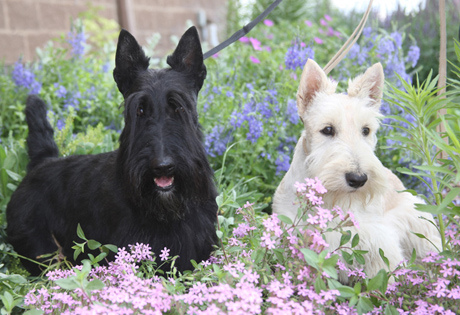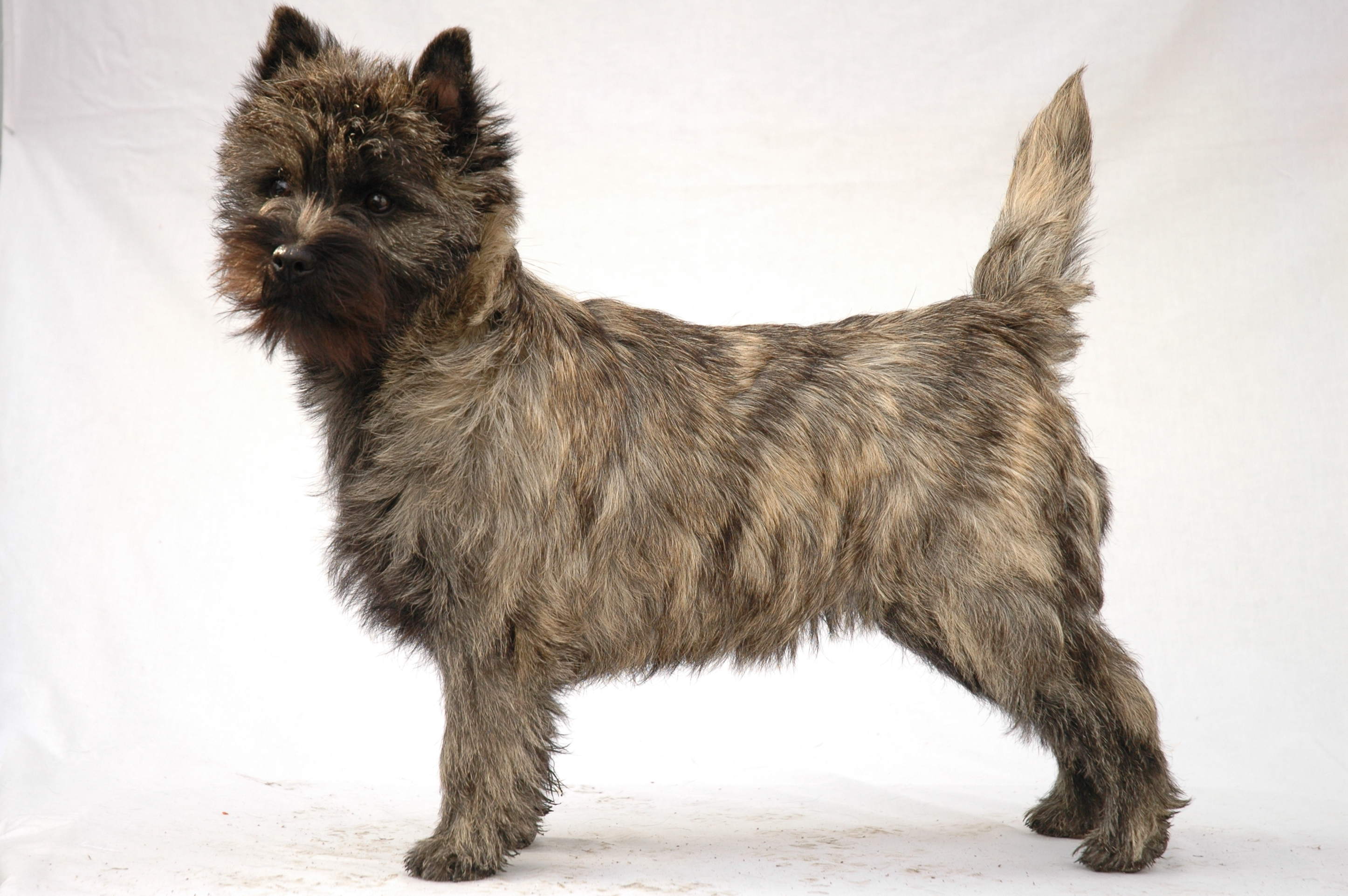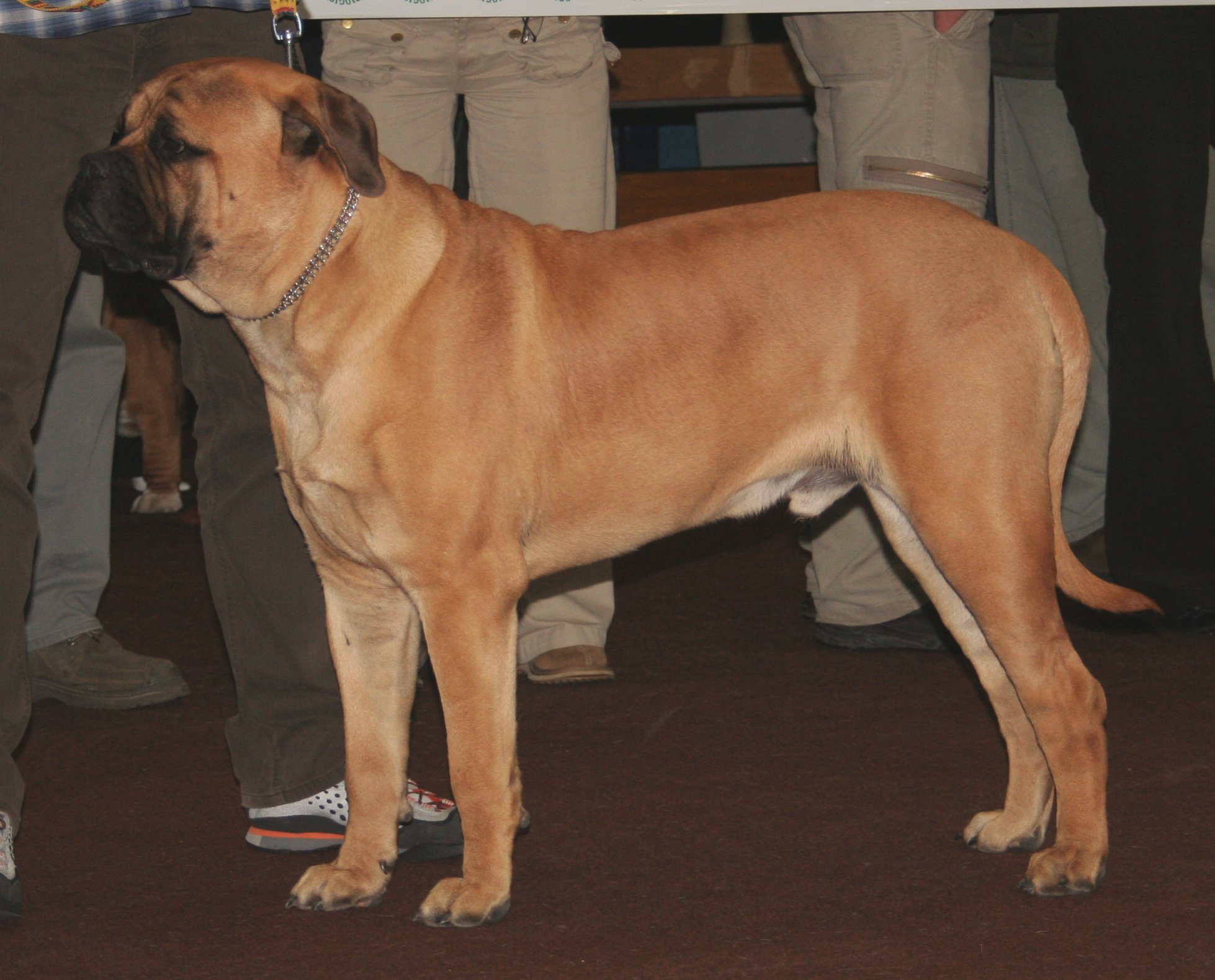|
Craniomandibular Osteopathy
Craniomandibular osteopathy, also known as lion's jaw, is a developmental disease in dogs causing extensive bony changes in the mandible and skull. In this disease, a cyclical resorption of normal bone and replacement by immature bone occurs along the inner and outer surfaces of the affected bones. It usually occurs between the ages of 3 and 8 months. Breeds most commonly affected include the West Highland White Terrier, Scottish Terrier, Cairn Terrier, and Boston Terrier. It is rare in large-breed dogs, but it has been reported. Symptoms include firm swelling of the jaw, drooling, pain, and difficulty eating. It is an inherited disease, especially in Westies, in which it has been recognized as an autosomal recessive trait. Canine distemper has also been indicated as a possible cause, as has ''E. coli'' infection, which could be why it is seen occasionally in large-breed dogs. Growth of lesions will usually stop around the age of one year, and possibly regress. This timing ... [...More Info...] [...Related Items...] OR: [Wikipedia] [Google] [Baidu] |
Mandible
In anatomy, the mandible, lower jaw or jawbone is the largest, strongest and lowest bone in the human facial skeleton. It forms the lower jaw and holds the lower tooth, teeth in place. The mandible sits beneath the maxilla. It is the only movable bone of the skull (discounting the ossicles of the middle ear). It is connected to the temporal bones by the temporomandibular joints. The bone is formed prenatal development, in the fetus from a fusion of the left and right mandibular prominences, and the point where these sides join, the mandibular symphysis, is still visible as a faint ridge in the midline. Like other symphyses in the body, this is a midline articulation where the bones are joined by fibrocartilage, but this articulation fuses together in early childhood.Illustrated Anatomy of the Head and Neck, Fehrenbach and Herring, Elsevier, 2012, p. 59 The word "mandible" derives from the Latin word ''mandibula'', "jawbone" (literally "one used for chewing"), from ''wikt:mandere ... [...More Info...] [...Related Items...] OR: [Wikipedia] [Google] [Baidu] |
Skull
The skull is a bone protective cavity for the brain. The skull is composed of four types of bone i.e., cranial bones, facial bones, ear ossicles and hyoid bone. However two parts are more prominent: the cranium and the mandible. In humans, these two parts are the neurocranium and the viscerocranium ( facial skeleton) that includes the mandible as its largest bone. The skull forms the anterior-most portion of the skeleton and is a product of cephalisation—housing the brain, and several sensory structures such as the eyes, ears, nose, and mouth. In humans these sensory structures are part of the facial skeleton. Functions of the skull include protection of the brain, fixing the distance between the eyes to allow stereoscopic vision, and fixing the position of the ears to enable sound localisation of the direction and distance of sounds. In some animals, such as horned ungulates (mammals with hooves), the skull also has a defensive function by providing the mount (on the front ... [...More Info...] [...Related Items...] OR: [Wikipedia] [Google] [Baidu] |
West Highland White Terrier
The West Highland White Terrier, commonly known as the Westie, is a breed of dog from Scotland with a distinctive white harsh coat with a somewhat soft white undercoat. It is a medium-sized terrier, although with longer legs than other Scottish breeds of terrier. It has a white double coat of fur which fills out the dog's face, giving it a rounded appearance. The breed is intelligent, quick to learn, and can be good with children, but does not always tolerate rough handling. The Westie is an active breed, and is social with a high prey drive, as they were once used to hunt rodents. The modern breed is descended from a number of breeding programmes of white terriers in Scotland before the 20th century. Cousin to the Cairn Terrier, the Westie was bred to hunt small rodents at places such as farms. Edward Donald Malcolm, 16th Laird of Poltalloch, is credited with the creation of the modern breed from his Poltalloch Terrier, but did not want to be known as such. Other related b ... [...More Info...] [...Related Items...] OR: [Wikipedia] [Google] [Baidu] |
Scottish Terrier
The Scottish Terrier ( gd, Abhag Albannach; also known as the Aberdeen Terrier), popularly called the Scottie, is a breed of dog. Initially one of the highland breeds of terrier that were grouped under the name of ''Skye Terrier'', it is one of five breeds of terrier that originated in Scotland, the other four being the modern Skye, Cairn, Dandie Dinmont, and West Highland White terriers. They are an independent and rugged breed with a wiry outer coat and a soft dense undercoat. The First Earl of Dumbarton nicknamed the breed "the diehard". According to legend, the Earl of Dumbarton gave this nickname because of the Scottish Terriers' bravery, and Scotties were also the inspiration for the name of his regiment, The Royal Scots, Dumbarton’s Diehard. Scottish Terriers, were originally bred to hunt vermin on farms. They are a small breed of terrier with a distinctive shape and have had many roles in popular culture. They have been owned by a variety of celebrities, including t ... [...More Info...] [...Related Items...] OR: [Wikipedia] [Google] [Baidu] |
Cairn Terrier
The Cairn Terrier is a terrier breed originating in the Scottish Highlands and recognized as one of Scotland's earliest working dogs. The breed was given the name Cairn because the breed's function was to hunt and chase quarry between the cairns in the Scottish highlands. Although the breed had existed long before, the name Cairn Terrier was a compromise suggestion after the breed originally was brought to official shows in the United Kingdom in 1909 under the name Short-haired Skye terriers. This name was not acceptable to The Kennel Club due to opposition from Skye Terrier breeders, and the name Cairn Terrier was suggested as an alternative. History Cairns originated in the Scottish Highlands and the Isle of Skye, initially grouped in the "Skye Terrier" class alongside the Scottish and West Highland White Terriers. In the early 1900s, the three breeds began to be bred separately. The Kennel Club of the United Kingdom gave the Cairn Terrier a separate register in 1912; the ... [...More Info...] [...Related Items...] OR: [Wikipedia] [Google] [Baidu] |
Boston Terrier
The Boston Terrier is a breed of dog originating in the United States of America. This "American Gentleman" was accepted in 1893 by the American Kennel Club as a non-sporting breed. Color and markings are important when distinguishing this breed from the AKC standard. They should be either black, brindle or seal with white markings. Boston Terriers are small and compact with a short tail and erect ears. The AKC says they are highly intelligent and very easily trained. They are friendly and can be stubborn at times. The average life span of a Boston Terrier is around 11 to 13 years. The American Kennel Club ranked the Boston Terrier as the 21st most popular breed in 2019. History The Boston terrier breed originated around 1875, when Robert C. Hooper of Boston purchased from Edward Burnett a dog named Judge (known later as Hooper's Judge), which was of a bull and terrier type lineage. Hooper's Judge is directly related to the original bull and terrier breeds of the 19th and earl ... [...More Info...] [...Related Items...] OR: [Wikipedia] [Google] [Baidu] |
Recessive Gene
In genetics, dominance is the phenomenon of one variant (allele) of a gene on a chromosome masking or overriding the effect of a different variant of the same gene on the other copy of the chromosome. The first variant is termed dominant and the second recessive. This state of having two different variants of the same gene on each chromosome is originally caused by a mutation in one of the genes, either new (''de novo'') or inherited. The terms autosomal dominant or autosomal recessive are used to describe gene variants on non-sex chromosomes ( autosomes) and their associated traits, while those on sex chromosomes (allosomes) are termed X-linked dominant, X-linked recessive or Y-linked; these have an inheritance and presentation pattern that depends on the sex of both the parent and the child (see Sex linkage). Since there is only one copy of the Y chromosome, Y-linked traits cannot be dominant or recessive. Additionally, there are other forms of dominance such as incomplete d ... [...More Info...] [...Related Items...] OR: [Wikipedia] [Google] [Baidu] |
Canine Distemper
Canine distemper virus (CDV) (sometimes termed footpad disease) is a viral disease that affects a wide variety of mammal families, including domestic and wild species of dogs, coyotes, foxes, pandas, wolves, ferrets, skunks, raccoons, and felines, as well as pinnipeds, some primates, and a variety of other species. CDV does not affect humans. In canines CDV affects several body systems, including the gastrointestinal and respiratory tracts and the spinal cord and brain. Common symptoms include high fever, eye inflammation and eye/nose discharge, labored breathing and coughing, vomiting and diarrhea, loss of appetite and lethargy, and hardening of nose and footpads. The viral infection can be accompanied by secondary bacterial infections and can present eventual serious neurological symptoms. Canine distemper is caused by a single-stranded RNA virus of the family ''Paramyxoviridae'' (the same family of the viruses that causes measles, mumps, and bronchiolitis in humans). The d ... [...More Info...] [...Related Items...] OR: [Wikipedia] [Google] [Baidu] |
Escherichia Coli
''Escherichia coli'' (),Wells, J. C. (2000) Longman Pronunciation Dictionary. Harlow ngland Pearson Education Ltd. also known as ''E. coli'' (), is a Gram-negative, facultative anaerobic, rod-shaped, coliform bacterium of the genus ''Escherichia'' that is commonly found in the lower intestine of warm-blooded organisms. Most ''E. coli'' strains are harmless, but some serotypes ( EPEC, ETEC etc.) can cause serious food poisoning in their hosts, and are occasionally responsible for food contamination incidents that prompt product recalls. Most strains do not cause disease in humans and are part of the normal microbiota of the gut; such strains are harmless or even beneficial to humans (although these strains tend to be less studied than the pathogenic ones). For example, some strains of ''E. coli'' benefit their hosts by producing vitamin K2 or by preventing the colonization of the intestine by pathogenic bacteria. These mutually beneficial relationships between ''E. col ... [...More Info...] [...Related Items...] OR: [Wikipedia] [Google] [Baidu] |
Endochondral Ossification
Endochondral ossification is one of the two essential processes during fetal development of the mammalian skeletal system by which bone tissue is produced. Unlike intramembranous ossification, the other process by which bone tissue is produced, cartilage is present during endochondral ossification. Endochondral ossification is also an essential process during the rudimentary formation of long bones, the growth of the length of long bones, and the natural healing of bone fractures. Growth of the cartilage model The cartilage model will grow in length by continuous cell division of chondrocytes, which is accompanied by further secretion of extracellular matrix. This is called interstitial growth. The process of appositional growth occurs when the cartilage model also grows in thickness due to the addition of more extracellular matrix on the peripheral cartilage surface, which is accompanied by new chondroblasts that develop from the perichondrium. Primary center of ossification ... [...More Info...] [...Related Items...] OR: [Wikipedia] [Google] [Baidu] |
Prognosis
Prognosis (Greek: πρόγνωσις "fore-knowing, foreseeing") is a medical term for predicting the likely or expected development of a disease, including whether the signs and symptoms will improve or worsen (and how quickly) or remain stable over time; expectations of quality of life, such as the ability to carry out daily activities; the potential for complications and associated health issues; and the likelihood of survival (including life expectancy). A prognosis is made on the basis of the normal course of the diagnosed disease, the individual's physical and mental condition, the available treatments, and additional factors. A complete prognosis includes the expected duration, function, and description of the course of the disease, such as progressive decline, intermittent crisis, or sudden, unpredictable crisis. When applied to large statistical populations, prognostic estimates can be very accurate: for example the statement "45% of patients with severe septic shock w ... [...More Info...] [...Related Items...] OR: [Wikipedia] [Google] [Baidu] |
Bullmastiff
The Bullmastiff is a British breed of dog of mastiff type and large size, with a solid build and a short muzzle. It was developed as a guard dog in the nineteenth century by cross-breeding the English Mastiff with the now-extinct Old English Bulldog. It was recognised as a breed by The Kennel Club in 1924. History The origins of the Bullmastiff are unclear. In the eighteenth century, in some regions of England, the Old English Mastiff and English Bulldog were commonly inter-bred to produce dogs suitable for work guarding people and their property. By the beginning of the twentieth century this cross-breed was in widespread use as an aid to gamekeepers in the control of poaching. They were bred by gamekeepers for strength, size and speed using a cross of the tough, heavy and aggressive Bulldog of the nineteenth century with the large, strong, less aggressive Mastiff.Walkey B. The Bullmastiff Fancier's Manual. Sechelt B.C., Canada: Coast Arts Publishing; 1992 As a result, the ... [...More Info...] [...Related Items...] OR: [Wikipedia] [Google] [Baidu] |





.jpg)



